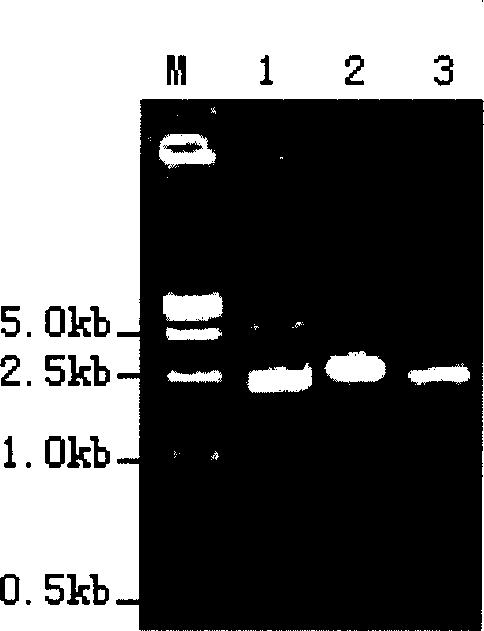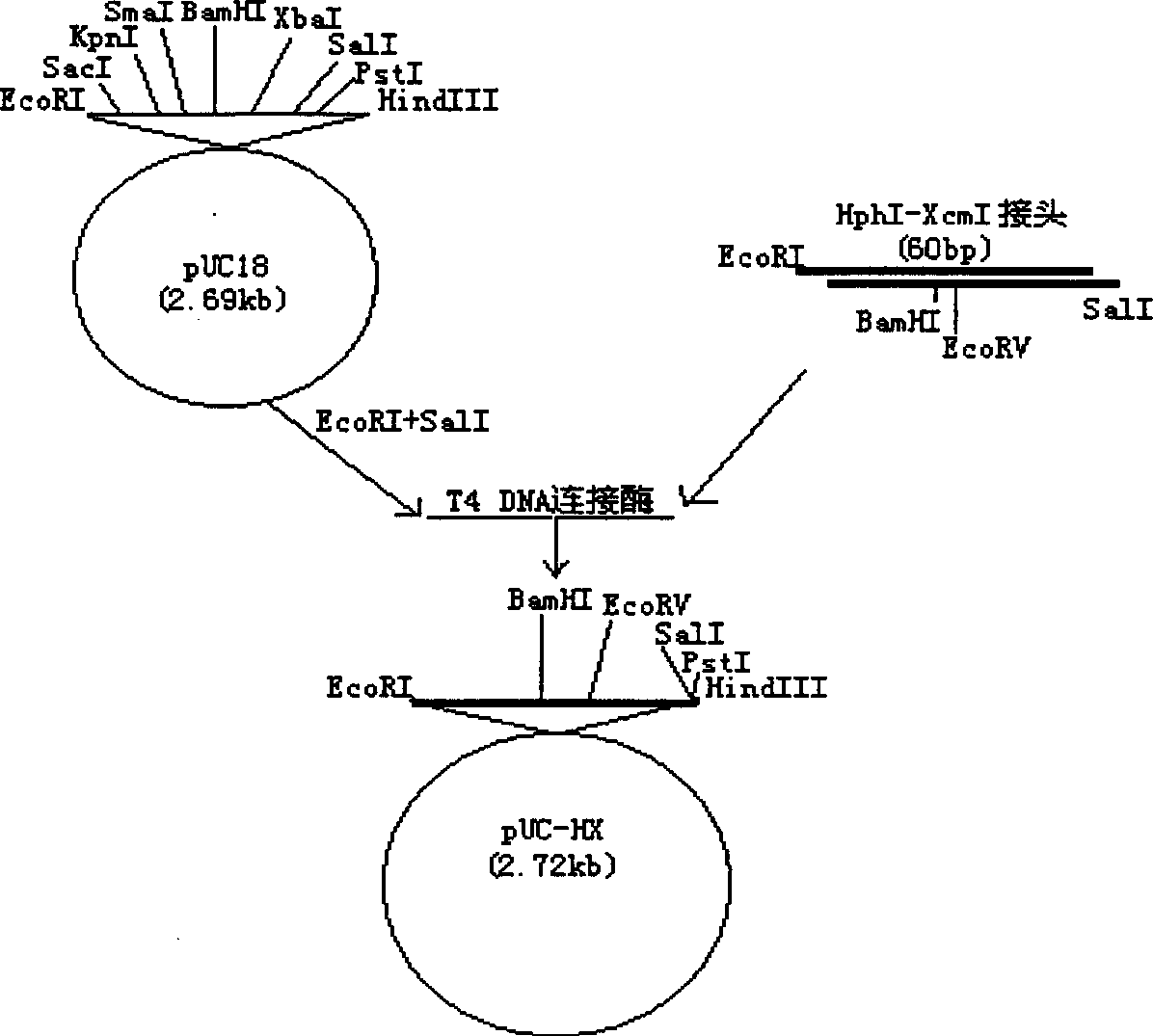DNA sequence for constituting T carrier and the T carrier constituting process
A DNA sequence and specific sequence technology, applied in the field of DNA sequence, can solve problems such as non-universal significance, unacceptable, cutting-connecting-cutting difference, etc.
- Summary
- Abstract
- Description
- Claims
- Application Information
AI Technical Summary
Problems solved by technology
Method used
Image
Examples
Embodiment 1
[0019] The present invention will be further described below by specific examples. Example 1. Synthesis of HphI-XcmI linker
Embodiment 2
[0020] according to figure 1 Sequences shown The HphI-XcmI linker sequence was synthesized by conventional methods. The two strands of the linker were synthesized separately, and then the two strands were dissolved in double-distilled water, mixed equimolarly, and annealed at 37°C for 15 minutes to obtain a double-stranded HphI-XcmI linker with a full length of 60bp (such as figure 1 shown). The linker sequence is a specific sequence belonging to the sequences shown in Sequence Table 2. Example 2. Synthesis of Exonuclease Competitive Substrates (ECS)
Embodiment 3
[0021] In this example, a 11nt oligo DNA was used as the exonuclease competitive substrate to inhibit the influence of XcmI residual exonuclease activity on the target T vector. The competitive substrate can be synthesized according to conventional methods, and the specific sequence is 5'p-CCAGCGCTGGT. Soluble in ddH after synthesis 2O to a final concentration of 0.5 μg / μl. Example 3. Construction of vector pUC-HX (pre-T vector)
PUM
 Login to View More
Login to View More Abstract
Description
Claims
Application Information
 Login to View More
Login to View More - R&D
- Intellectual Property
- Life Sciences
- Materials
- Tech Scout
- Unparalleled Data Quality
- Higher Quality Content
- 60% Fewer Hallucinations
Browse by: Latest US Patents, China's latest patents, Technical Efficacy Thesaurus, Application Domain, Technology Topic, Popular Technical Reports.
© 2025 PatSnap. All rights reserved.Legal|Privacy policy|Modern Slavery Act Transparency Statement|Sitemap|About US| Contact US: help@patsnap.com



